
Mapping out the values with Adobe Illustrator

Process
Pencil on paper, 14in x 16 in.
ASSIGNMENT 1: LINEAR STILL LIFE
Students will complete a drawing using graphite pencils exploring the use of line. There should be at least four or five objects but may be more. This is a linear based assignment so do not focus on any type of blending. Do not leave the background or large areas of the white
Students will complete a drawing using graphite pencils exploring the use of line. There should be at least four or five objects but may be more. This is a linear based assignment so do not focus on any type of blending. Do not leave the background or large areas of the white
To make the process of drawing a still life more compelling for me, I staged a scene from my childhood. It's a composite of many memories I have of going inside after playing out in the winter snow.
My little brother and I would run into the house, throw off our boots, hats, and mittens. The hallway lights would be off to save energy, and warm light would emanate from the kitchen where my mom was cooking. We'd be so cold our fingers were numb and we would always run to the kitchen to put hot water on our frozen fingers. We'd have soup and tea, get under a blanket, and sometimes even watch a movie if it wasn't too late.
I put two hats, a pair of gloves, and a scarf on my dorm room floor as a reference. I illuminated them in light that goes off the corner of the page. I wanted that to resemble light emanating from another room, like the kitchen light from my memory. I also took a reference photo and used Adobe Illustrator to isolate the darkest and lightest values of the composition.
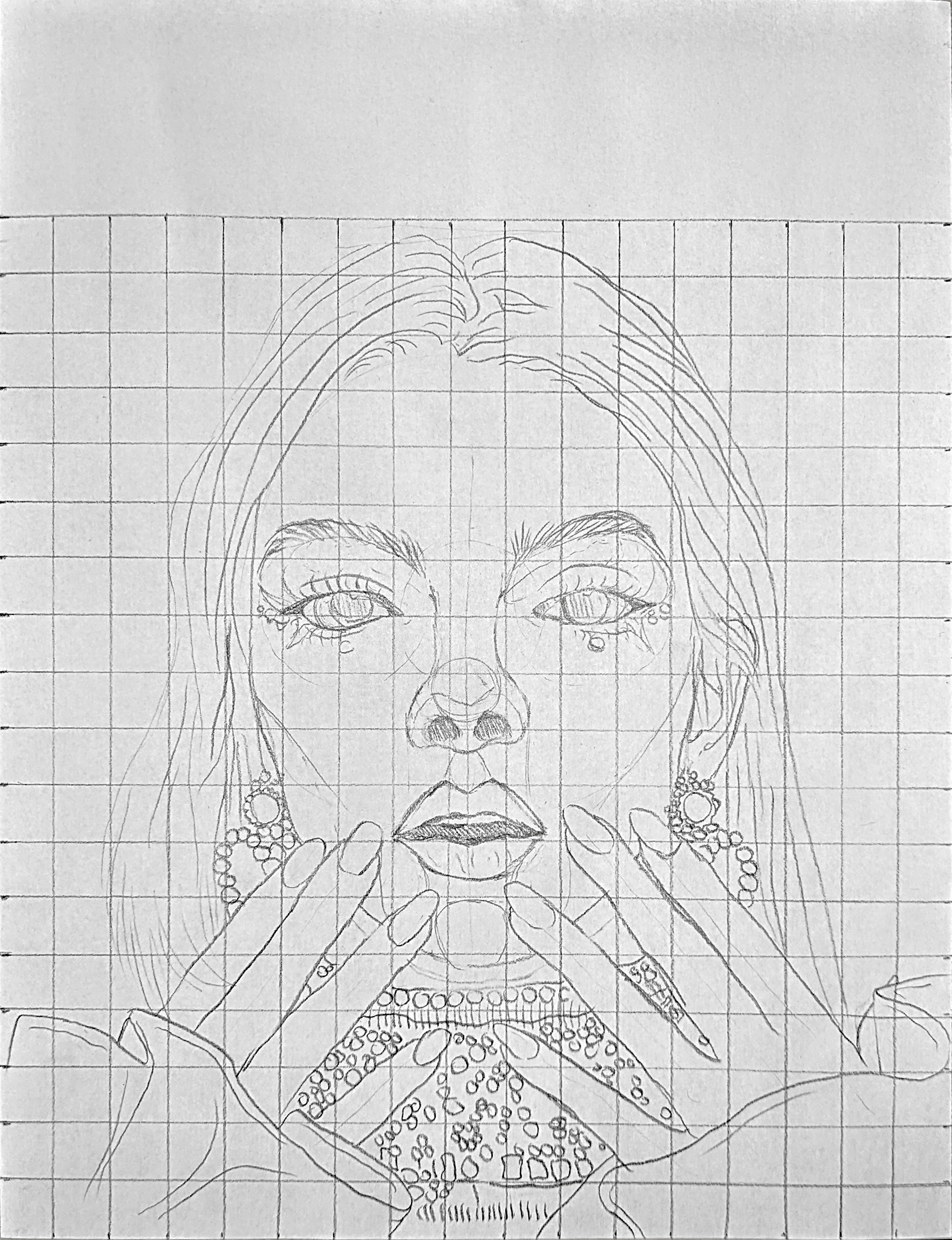
Grid sketch
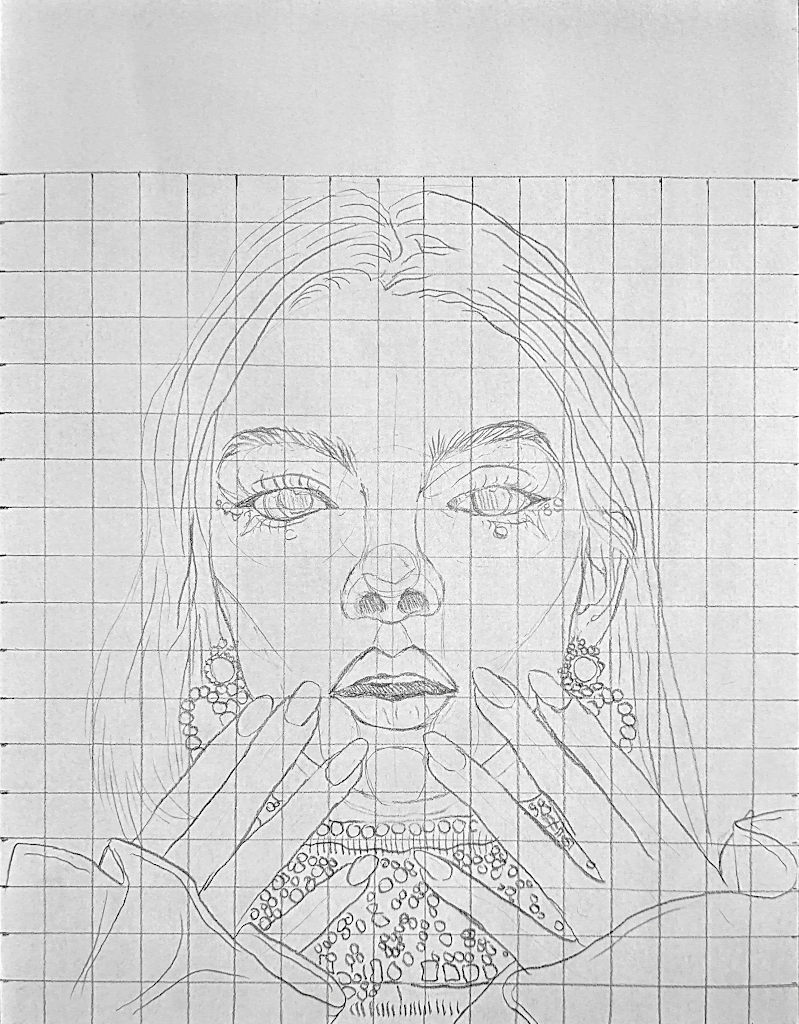
Process
Pen on paper, 15in x 19in.
ASSIGNMENT 2: CELEBRITY PORTRAIT
Students will be required to find a good, clear photograph of the face of a celebrity. The photo will be redrawn in black ink pen on cold press illustration board. There should be a strong understanding of the many elements of art and principles of design learned so far in the course including value, line, pattern, repetition, shape, composition, etc. This assignment is expected to be detailed, intricate, and complex.
Students will be required to find a good, clear photograph of the face of a celebrity. The photo will be redrawn in black ink pen on cold press illustration board. There should be a strong understanding of the many elements of art and principles of design learned so far in the course including value, line, pattern, repetition, shape, composition, etc. This assignment is expected to be detailed, intricate, and complex.
I was inspired by the movie The Menu. I wanted to create a portrait of Anya Taylor-Joy that related to one of her characters. I took excerpts of the script in The Menu, where Chef Slowik gives a short intro to each dish.
(Spoilers Ahead)
The film is explores themes of classism and the experiences of being in the service industry. The ending of the film includes destruction and death by fire, so I thought it would be fitting to have bits and pieces of the menu in the background be charred and burned.
Nudity Below btw
Special Thanks to Tim for being such a great model!!
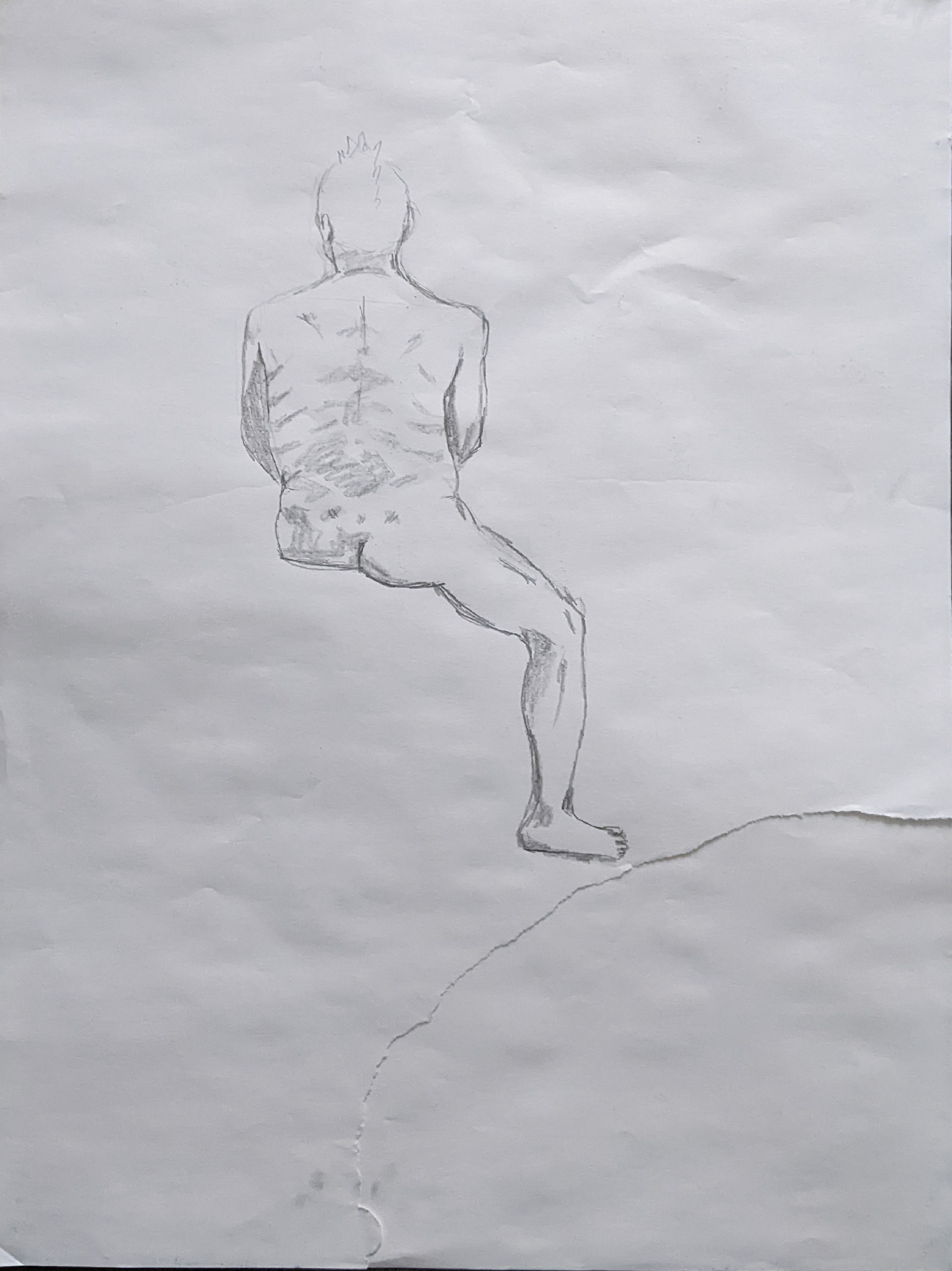
Best gesture sketch imo
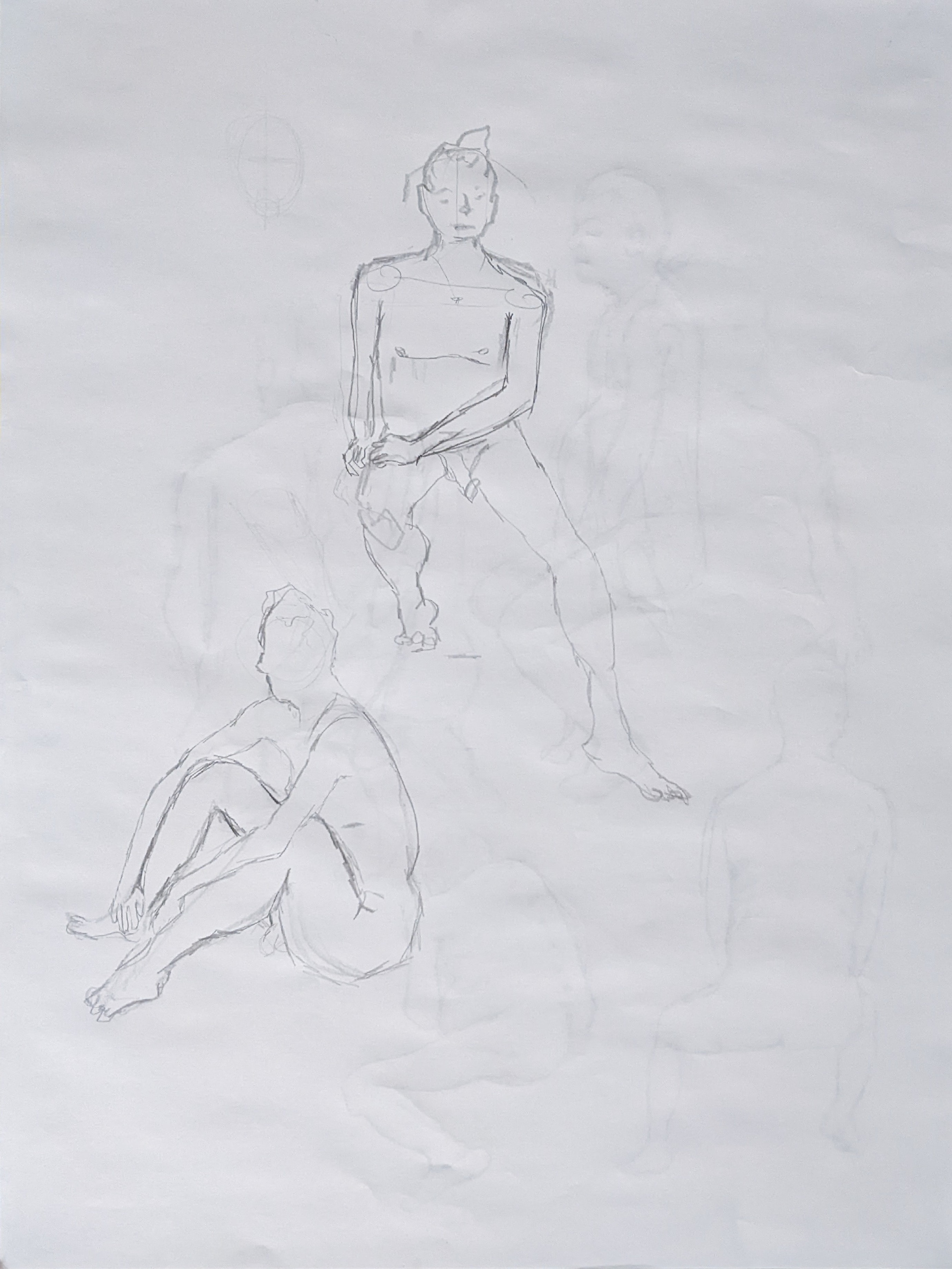

Pencil on paper, 18in x 24in.
GESTURE STUDY
For the Gesture Study students will complete gesture drawings from the model in class. Students may use charcoal, graphite or ink pen. These should be quick intuitive studies focusing on capturing the essence of the pose and limiting detail. Place emphasis on accuracy in the pose and proportions.
For the Gesture Study students will complete gesture drawings from the model in class. Students may use charcoal, graphite or ink pen. These should be quick intuitive studies focusing on capturing the essence of the pose and limiting detail. Place emphasis on accuracy in the pose and proportions.
(5-10 min per pose)
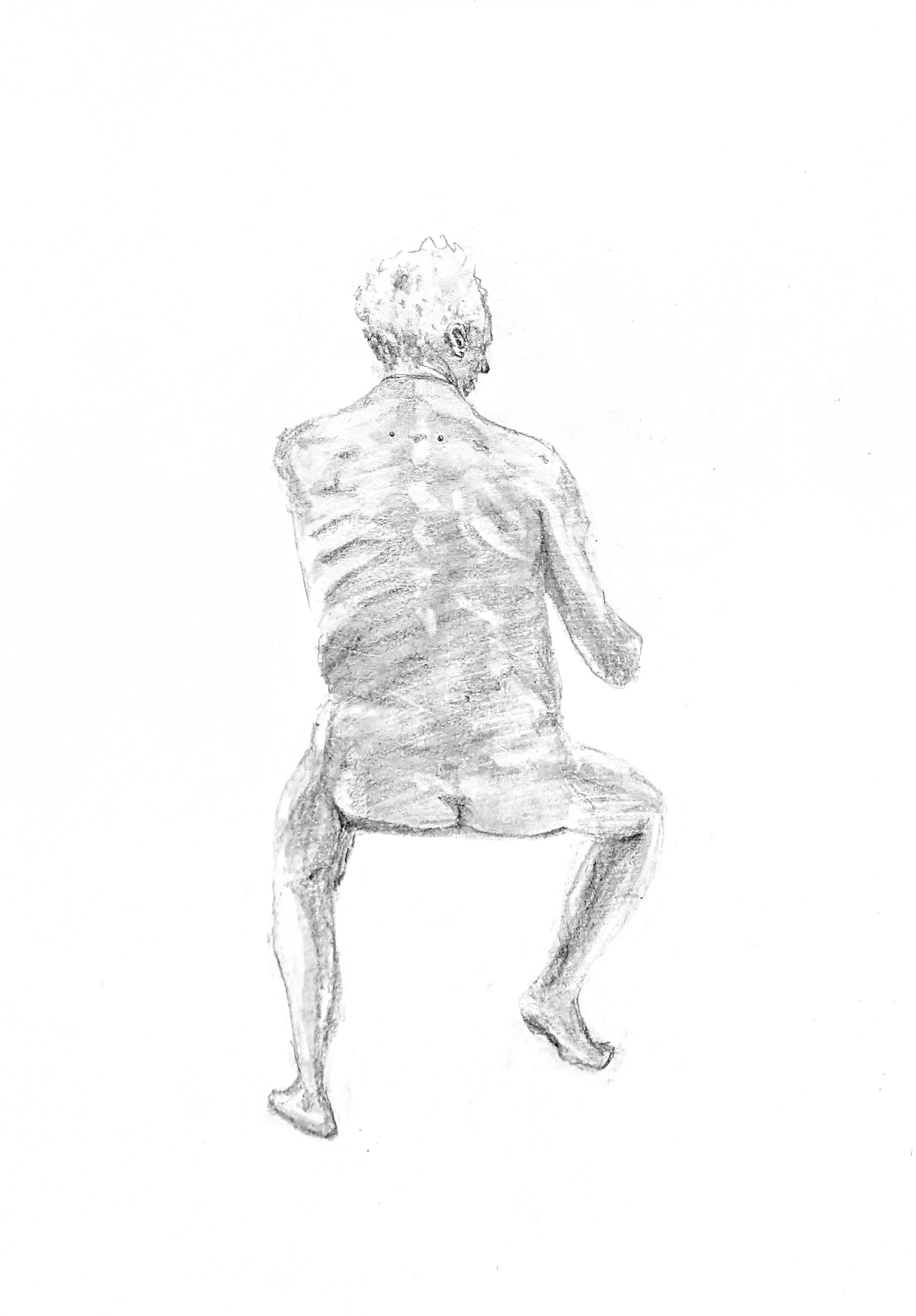
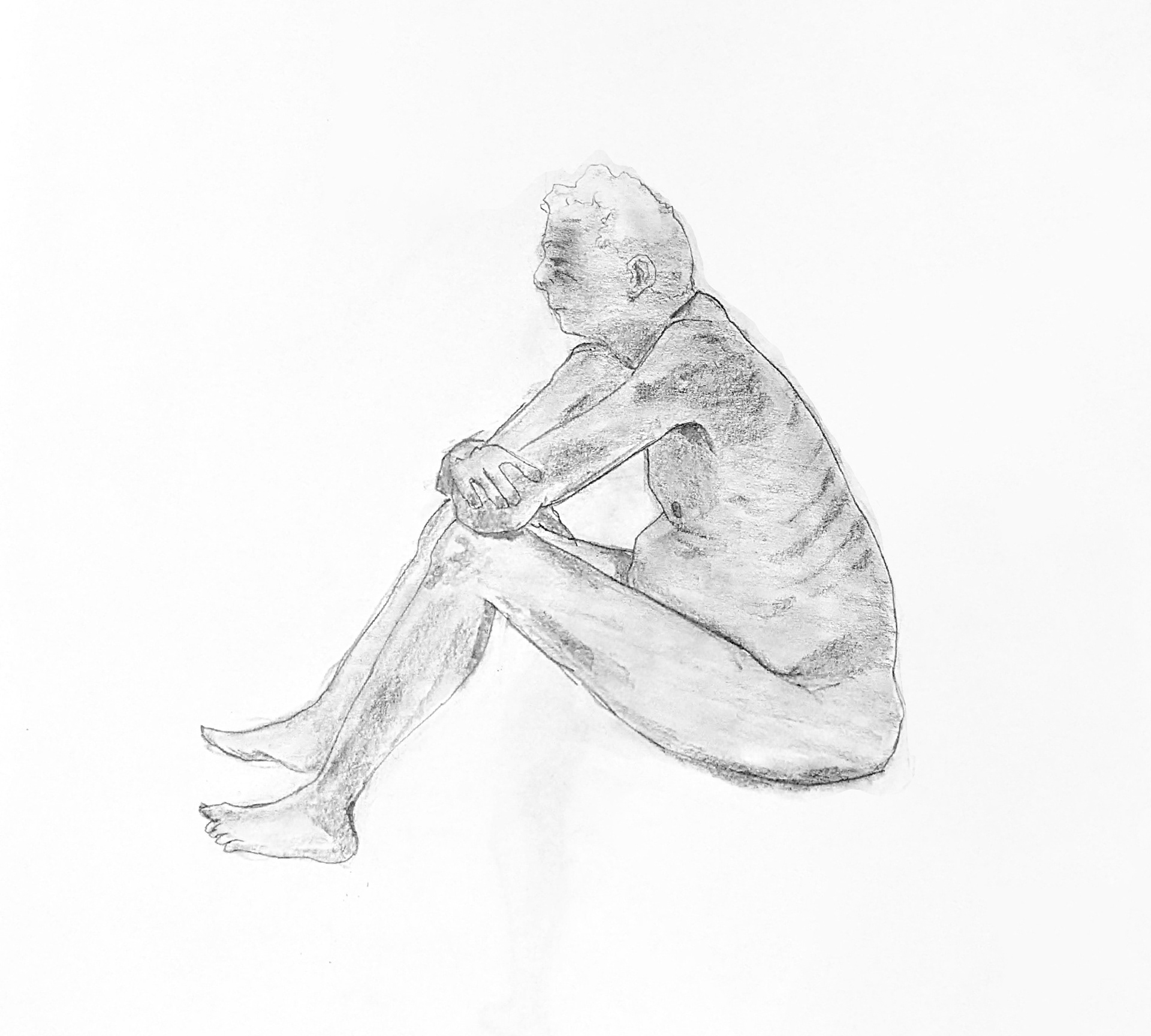
Pencil on paper, 18in x 24in.
MODEL STUDY
For the Model Study students will be working from the model in class. Students may use charcoal, graphite or ink pen. These should be quick intuitive studies focusing on capturing the essence of the pose and limiting detail. Place emphasis on accuracy in the pose and proportions.
For the Model Study students will be working from the model in class. Students may use charcoal, graphite or ink pen. These should be quick intuitive studies focusing on capturing the essence of the pose and limiting detail. Place emphasis on accuracy in the pose and proportions.
(25-30 min per pose)
Pencil on paper, 18in x 24in.
ASSIGNMENT 3: FIGURE
Students will be working in class from the model. The model will posing in the same position for several sittings. You will also be constructing an environment for the model to be placed in so searching for reference will also be important. Attention should also be given to the composition, background, setting, and surroundings.
Students will be working in class from the model. The model will posing in the same position for several sittings. You will also be constructing an environment for the model to be placed in so searching for reference will also be important. Attention should also be given to the composition, background, setting, and surroundings.

Original drawing
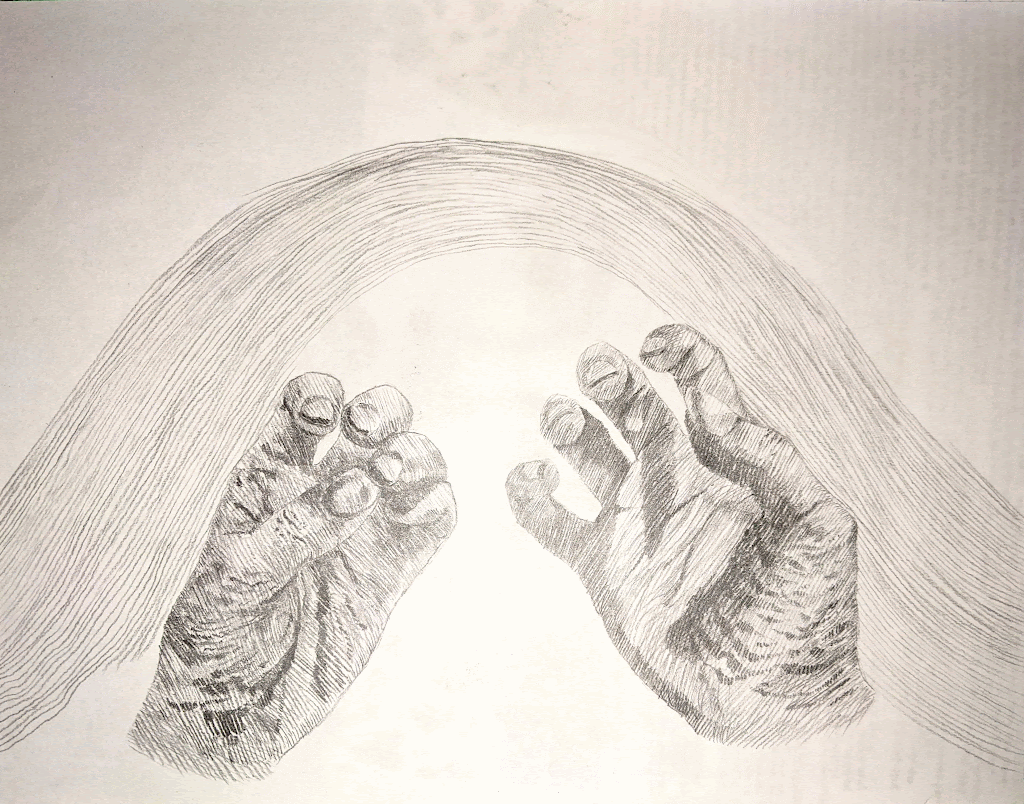
Process
Pencil and micron pen on paper, 18in x 24in.
ASSIGNMENT 4: THE WORLD, HERE AND NOW
Students will create a drawing that visually communicates a chosen topic relating to current world issues. First a student will pick a topic that relates to things happening in the world we live in. The title of the assignment, The World, Here and Now, can be taken as a broad influence. Consider something that you may feel strongly about, something that is close to you or has touched you personally perhaps, a local issue, or on a larger scale a universal issue.
Students will create a drawing that visually communicates a chosen topic relating to current world issues. First a student will pick a topic that relates to things happening in the world we live in. The title of the assignment, The World, Here and Now, can be taken as a broad influence. Consider something that you may feel strongly about, something that is close to you or has touched you personally perhaps, a local issue, or on a larger scale a universal issue.
This piece is about my experience with dermatillomania or excoriation disorder.
OCD is an umbrella term that encapsulates many experiences. All these various forms of OCD aren't commonly understood. Many OCD symptoms are stigmatized, and I rarely hear people discuss the type of OCD I experience. Symptoms vary a lot from one individual to the next, so I decided to represent it in a way that feels true to my particular experience.
The form of OCD that I have is one that involves Body-Focused Repetitive Behaviors. I've experienced compulsive hair pulling and skin picking since I was around 8-9.
As I grew older, I transitioned to mostly skin picking. In my case, it's often triggered by “bad” skin textures that feel wrong, there's this need to sand down inconsistencies, and sometimes I find myself scratching at my skin without even realizing, when distracted with other tasks, it feels like my hands have a mind of their own. It's frustrating, I hate creating wounds on my skin, and I don't like going through cycles of recovery and relapse.
Though particularly bad episodes will always happen, they will also pass, and I have to accept OCD’s permanence in my life to better deal with it. I can’t just have a good few days and pretend like I shouldn’t be conscious of my habits.
The ripples from my hands transition into scratch marks on my face, one action leads to countless consequences, which I can’t undo.
The pen and pencil tie into each material's permanence. The pen is permanent, but the pencil has the ability to change and evolve. The background and face are in pen, they're there to stay regardless of how I feel. It's a way of visually communicating the permanent presence of OCD in my life, it's always going to be here and now. The hands are in pencil, and they are my hands. The impermanence of the pencil communicates agency, the ability to change and adapt, to seek help or learn strategies for improving quality of life.
